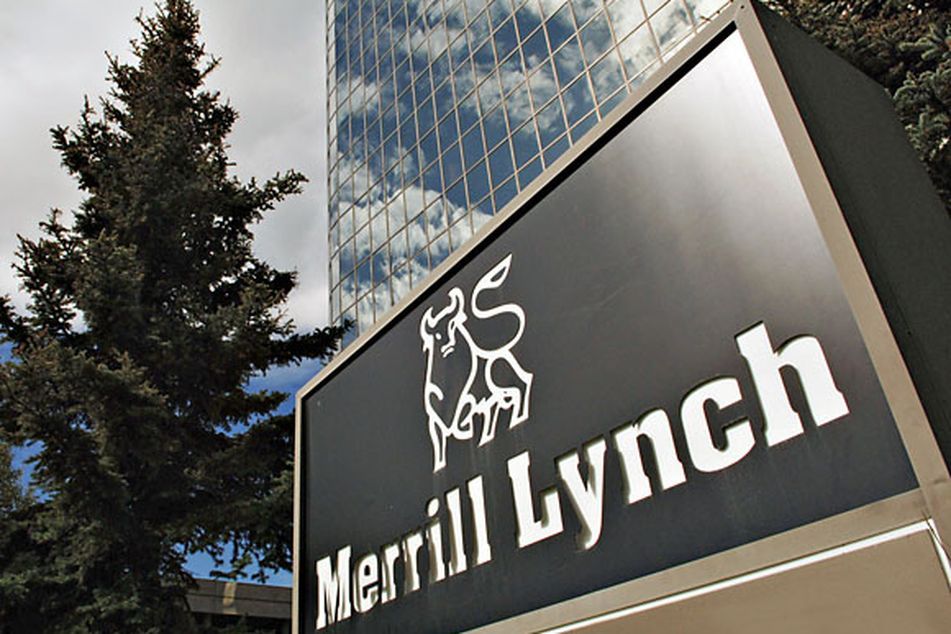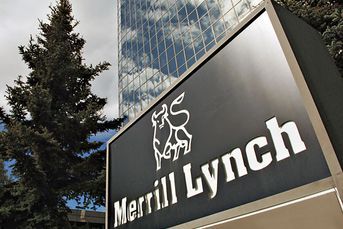The cause of Merrill’s downfall? New book offers up a culprit

'Crash of the Titans' follows Thundering Herd as it heads toward cliff in 2007; secret 'Voldemort Book'
Some Merrill Lynch & Co. traders had a dark departmental secret: They called it the “Voldemort Book,” says Greg Farrell in “Crash of the Titans.”
“Like the villain in the Harry Potter stories, the mere mention of it was discouraged,” Farrell writes in his exhaustive and sometimes exhausting 471-page reconstruction of how Merrill sealed its own fate by becoming more bullish on bonuses than on America.
The “Voldemort Book” was a portfolio of more than $30 billion in “super senior” collateral debt obligations that Merrill accumulated on its balance sheet after investors began shunning toxic mortgage instruments in 2007, Farrell says. The Risk That Must Not Be Named triggered a chain of losses and writedowns that would end Merrill’s 94 years of independence, turn Bank of America Corp. into a temporary ward of the state, and wreck the careers of E. Stanley O’Neal and Kenneth D. Lewis.
Farrell, a Financial Times reporter, says he pieced together this fly-on-the-wall narrative from at least 250 hours of interviews. He also drew on evidence including e-mails, confidential papers and transcripts from internal presentations at Merrill and Bank of America, which agreed to buy the securities firm on the momentous September weekend when Lehman Brothers Holdings Inc. crashed.
Merrill’s downfall is often seen as a footnote to the dramatic demise of Lehman. It was far more than that, as this prodigious piece of reporting shows. Framed as a financial thriller laced with ringing phones and expletives, the book shows how a firm famous for bringing Wall Street to Main Street lurched toward disaster while Chief Executive Officer O’Neal was playing golf on Martha’s Vineyard.
‘I’m Not Thick!’
Some scenes will feel like reruns for those who have read Andrew Ross Sorkin’s “Too Big to Fail” and Henry M. Paulson Jr.’s “On the Brink.” We see O’Neal secretly shopping Merrill to Bank of America CEO Lewis in an apartment overlooking New York’s Central Park in September 2007. We’re reminded, too, of how Paulson, as Treasury secretary, a year later urged O’Neal’s successor, John Thain, to find a buyer.
“Hank, I’m not thick! I heard you,” Thain is quoted as telling his former boss at Goldman Sachs Group Inc.
Other details are less familiar, notably Merrill President Gregory J. Fleming’s role in negotiating the sale to Bank of America for $29 a share, a 70 percent premium to the stock’s closing value the previous Friday.
Super-Thain
Farrell is good at dissecting Thain’s misplaced optimism and insensitivity to public opinion. By this account, the square-jawed Clark Kent of a CEO thought the slump of 2007 would be short-lived, and he lobbied for a $20 million cash bonus even after the government injected a total of $25 billion into Merrill and Bank of America in October 2008.
Yet Farrell absolves “Super-Thain” of responsibility for the fall of Merrill: The damage was done, Farrell says, long before Thain claimed O’Neal’s corner office (and spent $1.2 million on redecorating it).
One theme running through these pages is how Merrill and other investment banks got into trouble by trying to match Goldman’s profitability. Journalists have succumbed to a similar syndrome: Sorkin envy.
In “Too Big to Fail,” Sorkin synthesized sharp anecdotes, dialogue and multiple story lines into a seamless narrative. Farrell’s book, though engrossing, is short on the kind of cinematic details that make Sorkin’s account so inviting. While Farrell maintains a fast pace for long stretches, some chapters choke on minutia and corporate history.
Fateful Decision
Farrell traces Merrill’s downfall to O’Neal’s decision to put a star salesman, Osman Semerci, in charge of fixed income, currencies and commodities in July 2006. A little more than a year later, on Oct. 3, 2007, Semerci was fired after internal investigations concluded that the department during his tenure had ramped up CDO production even as other investment banks were scaling back, Farrell says.
“On Semerci’s watch, the FICC department put more than $30 billion worth of CDOs on Merrill’s balance sheet,” Farrell says, citing a presentation made to Merrill’s board of directors after his ouster.
Given the novelistic style of this book, it’s unclear if Farrell sought comment from Semerci, who has denied previous assertions about his role in Merrill’s meltdown. What is clear is that Farrell sees Semerci as “a convenient scapegoat.”
“Not only was Semerci not a rogue trader, he was far closer to being the model employee of the recent boom era,” Farrell writes. “He was a product of Wall Street’s bonus culture, which rewards employees according to how much revenue they produce for their firm.”
For Farrell, the real culprit was O’Neal.
“Why did Merrill Lynch need to be saved in the first place?” he asks. “Because O’Neal let his guys run wild in the CDO market so they all could get bigger bonuses.”
“Crash of the Titans: Greed, Hubris, the Fall of Merrill Lynch and the Near-Collapse of Bank of America” is from Crown Business (471 pages, $27). To buy this book in North America, click here.
(James Pressley writes for Muse, the arts and leisure section of Bloomberg News. The opinions expressed are his own.)
Learn more about reprints and licensing for this article.




